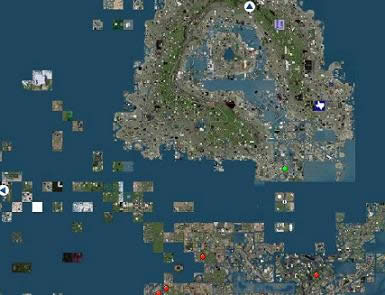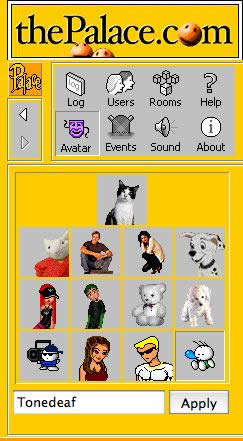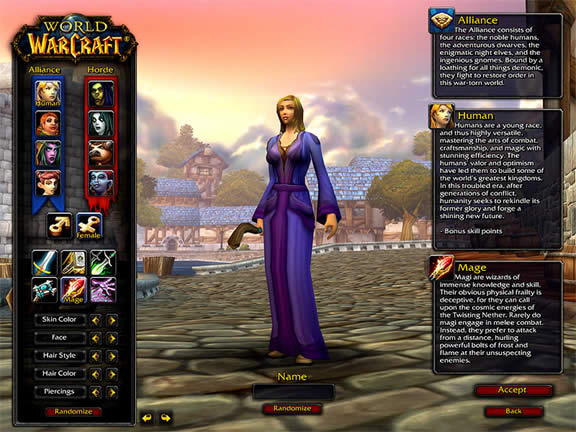© 2008 Sarah Robbins-Bell
EDUCAUSE Review, vol. 43, no. 5 (September/October 2008)
Higher Education as Virtual Conversation
Whether or not it is an accurate portrayal, the old stereotype of higher education is the lecture hall, where students sit passively and take notes from a wise professor whose experience and knowledge can be shared only in the classroom. The professor’s role is to dispense information, and the students’ role is to receive it. We all know the old adage: “Tell me, and I'll forget; show me, and I may remember; involve me, and I'll understand.†However idealistic our conceptions of education may be, those involved in higher education know how difficult it is to truly achieve student involvement. Even the most inventive instructor has the occasional disaffected student who simply refuses to engage. But outside the classroom, that same student who refuses to engage in classroom discussion may well be deeply involved in social conversations, politics, or other communities. Although the barrier between inside and outside the classroom has been difficult to overcome, new social media forms today are starting to break down that barrier and enable dialogue. The participatory culture offers exciting new opportunities to pull learners into conversations and turn passive, knowledge-receiving students into active, knowledge-making student.
The Social Media Rift
The false separation between classroom learning and life learning is falling away with each new form of social media that becomes part of our everyday life. Even old models of social media, like e-mail, have begun to break down the barriers in the classroom. Students who feel more comfortable asking questions in text may engage in conversations with their instructors and fellow students via e-mail or a web forum. The more conversations that an instructor can encourage, the more involved students may become.
But what is “social media,†exactly? It helps to think of other models of media in contrast. The broadcast media model, probably the most familiar model, allows for one-way communication between a large broadcasting company (e.g., radio, television, newspaper) and an audience. In this model, there is no opportunity for conversation because only one party has the ability to speak. Contrast this model with more recent forms of communication available via the Internet. Blogs, for example, give a writer (or group of writers) the ability to distribute information just as a broadcaster would do, but with an important addition: the comment feature. Blog readers can engage with the writer, ask questions, and leave comments and critiques. Social media gives both the producer and the consumer a voice.
Today’s moderately tech-savvy student is accustomed to having a voice. Social networks (e.g., Facebook), instant messaging, blogs, and virtual worlds not only allow conversation but rely on it. After all, what would a service like YouTube or Digg look like if no one contributed content and no one commented? Instead, these popular social media services feature high levels of participation, numerous contributions and discussions, and even detailed debates.
We know that the demographics of Facebook, Digg, Fark, and World of Warcraft are the same as the general demographics of college/university students. So, why don’t we see the same levels of participation in the social media that are used in the classroom (typically, learning management systems) as are evident in the social media that students engage in voluntarily? I think the problem is that our pedagogy often isn’t ready for an increase in conversation.
The best way to explore this challenge is by focusing on one form of social media and investigating how it may be effectively integrated into education. I will focus here on virtual worlds. They have, by far, the most choices for conversation and seem to be a form that not only attracts millions of zealous users (Second Life has over fourteen million residents) but also encourages a great deal of meta-conversation (i.e., forums, websites, and blogs about virtual worlds).
Defining Virtual Worlds
Virtual worlds come in lots of flavors, but they all share four characteristics:
- Persistence: A virtual world can’t be paused; it exists whether or not a user is logged in.
- Multiuser: A virtual world must be populated or at least have the potential for population. A single-player world would be fairly useless.
- Avatars: Rather than offering an icon to represent a user, a virtual world allows a user to create an agent that takes action, an avatar. This representation of the user can perform actions that the user requests, such as fighting, expressing emotion, or simply moving through a space.
- Wide Area Network: A virtual world is facilitated via a wide area network rather than a local one. Freed from the limited access of a locally hosted space, virtual worlds have the potential to be global and large.
These four traits by no means form a consensual definition of virtual worlds among the community of scholars who study them, but the traits do function as a foundation for a discussion of the possibilities for virtual worlds in education.
Why Virtual Worlds Work in Education
For most of today’s educators, virtual worlds without game mechanics—virtual worlds such as Active Worlds, Second Life, and Croquet—offer the most flexibility and opportunity for educational applications. The persistence, multiuser environment, avatars, and wide area network possibilities of these virtual worlds can be powerful for teaching and learning.
Persistence
The brick-and-mortar classroom that an instructor uses to teach a course is filled with other classes at different times and is locked for the night and on holidays. By contrast, a virtual world is always open. If we compare a popular and public virtual world with a private chat room established for a course (a tool often used for conversation in distance learning), we can see an immediate and powerful difference. If I log in to the chat room at a time when no one else is logged in, there is nothing for me to do. My classmates aren’t there. My instructor isn’t there. Other than typing to myself, there are no activities I can take part in. A virtual world, however, offers buildings and objects and activities—even if no one else happens to be there. If I log in to Second Life at a time when none of my classmates are logged in, there is still an entire world to explore, skills to hone, and other people to meet. A persistent world offers persistent learning opportunities. It is up to the instructor and the student to define and explore what kind of activities will be useful for the learning goals of a particular course, but it’s possible that many of those goals can be accomplished in the community at large rather than in a delineated space intended for “learning.â€

The map of the Second Life world demonstrates the size of the virtual space. The thousands of user-owned islands exist whether a user is present or not.
Multiuser
Having more than one user in a virtual space certainly makes the space more interesting to be in, but the benefits go far beyond that. Many other technologies can put several users into a synchronous space; what virtual worlds offer in addition is the ability to have a massive number of users in the same world at the same time. Second Life often has more than 50,000 simultaneous users. No other technology can host that many users communicating in a synchronous space. This massive synchronicity not only allows for a rapidly developing culture within the world but also creates a sense of presence, of being in the same space together, that a chat room or discussion board simply cannot create.

This screenshot of the Second Life map, with green dots representing users currently logged in, demonstrates the power of a multiuser world for providing constant community.
Avatars
Unlike an icon, which is a metaphoric representation of a user such as a small picture or a username, an avatar can perform an action. If the user types in a command or clicks a button, the avatar can be made to run, fight, fly, chat, or change into another form. The avatar functions as the user’s agent of action in the virtual world. In addition to taking action, though, an avatar must take a form. The avatar’s form, and the flexibility of that form, are important features: the communication and expression afforded by a flexible avatar-creation system are well suited to educational applications. Even limited avatar-creation systems can be used to explore issues of identity formation and cultural literacies. Understanding the range of avatar customization between various types of virtual worlds is key to exploring possible uses in education.
Some virtual worlds offer only static avatars. For example, The Palace allows users to choose or create only very basic avatars. Yet even though static avatars might not offer opportunities for visual self-expression, the limitations of a static avatar force users to express themselves in other ways. Since avatar names and text chat (voice chat is usually not an option is such simplistic worlds) are the only tools available for user expression, the ability to express emotion, personality, and opinion must be contained in that text. Students exploring written expression of cultural shifts in language and the communication embedded in simplistic avatar actions (e.g., moving from side to side on screen, facing an avatar away from the group or person the user is text-chatting with) can truly isolate and explore the impact of the tools that are available.

Users of The Palace may choose or create only very basic avatars.
Virtual worlds with conditional avatar customization, such as the virtual world created for the game World of Warcraft (WoW), are useful for exploring the development of cultural literacies and the steps to establishing social reputation and status. Although avatars aren’t fluidly changeable, the customization that is possible has meaning. For example, WoW players who are highly literate in its system can recognize and “read†another player’s clothing and gear and understand that wearing a certain helmet, sword, or armor means that the player is of a certain class and level of accomplishment and has completed a difficult quest. Every virtual world with conditional avatar customizations has similar specific cultural literacies related to avatar appearance—all of which are useful to students exploring those concepts in areas such as literacy studies, anthropology, psychology, and sociology.

World of Warcraft offers users only a few options for avatar customization. Avatars are limited to males and females of stereotypical forms, with a few faces and hairstyles to choose from. Players can customize later only through changing clothing and weapons.
Virtual spaces such as Second Life, in which avatars are nearly unconditionally customizable, offer educational opportunities similar to those available in conditional avatar spaces, but on a more dramatic scale. In a virtual world in which the only static element of the avatar is its name, educators have nearly limitless options. Students can use their avatar to express themselves in a way that is similar to their profile on a social network, resembling who they are in real life. Alternatively, the flexible avatar can also allow students to experiment with personalities and roles that they might not otherwise be able to try out. For example, a non-handicapped student can take on a handicapped avatar to see how it feels. A male student can take on a female identity, or a female student can take on a male identity, to learn about gender stereotypes and roles. Yet these role-playing educational opportunities are possible only in a space with flexible avatar identity.

Second Life avatars are customized by each user with user-generated content such as wings, skin textures, and attached accessories.
Wide Area Network
Education has become far more global with the advent of the Internet. Classmates need not be in the same country, never mind in the same physical space. But a virtual world hosted on a wide area network offers more than just distance education. The ability to mix students from all over the world in one virtual world means that campuses can begin to blend classes from different subject areas as well as different campuses. A group of Florida students studying the German language and a group of German students learning English could meet in a virtual world to game together or simply to hold a social event in which both groups can be immersed in the language they’re learning with a community of native speakers. An advertising class and a business administration class could work together to begin a Second Life company. Beyond combining classes, the wide area network of virtual worlds implies that the space is public to join and participate in, meaning that students can interact with and learn from a larger community than can be offered by their local campus.
The Place of Virtual Worlds in Education
Earlier, I claimed that the reason participation in educational social media is lower than participation in other, voluntary forms of social media is because our pedagogy often isn’t ready for an increase in conversation. The above exploration of the characteristics of virtual worlds reveals how this form of social media can become an important tool in an educator’s arsenal. But using this tool requires a shift in thinking and an adjustment in pedagogical methods that will embrace the community, the fluid identity, and the participation—indeed, the increased conversation—that virtual spaces can provide.
The first hurdle is to accept that an instructor cannot have total control of a learning space while allowing true, open participation from students in a virtual world. We need to learn to embrace more participatory pedagogy if we’re to make the most of the technologies that are available to us. For example, I recently attended a conference presentation about a college’s Second Life projects. Part of the college’s virtual campus policy was that all students were required to use one of a few, mandated avatar options. Limiting students to “real world†clothing that was based on a private school uniform (which, by the way, the real-life students weren’t required to wear on the brick-and-mortar campus), this college completely removed the powerful possibilities that flexible avatars afford. The students involved in the project weren’t allowed to express themselves using their avatars; they weren’t allowed to experiment with creating clothing and other avatar accessories that might have been useful in class. Other examples of such limitations placed on virtual worlds by educators include sequestering students to a given space, imposing behavior rules that go against the dominant culture and social mores of the space, and over-structuring experiences such that students have no opportunity to contribute.
Virtual worlds in which ogres can attack, non-students can walk into classrooms, and “griefers†(virtual world trouble-makers of various degrees of seriousness) can intrude on an instructor’s plan might feel a bit too out of control for education. It is natural for an educator to want to plan, structure, and control what happens in class, but virtual worlds and most other social media require educators to embrace conversation and participation—meaning that educators are only one side of the conversation and that they must learn to take a back-seat to the experiences that students bring to the class. In a private space, such as a learning management system, educators might have control over who can chat and when and thus can know that the space is “safe.†However, the more control educators exert, the less genuine will be the participation and the more sterile will be the learning space.
Educators and educational institutions need to understand that virtual worlds, like other social media, are here to stay and that these exciting forms of media are not a threat to formal education. The genuine conversation and participation that virtual worlds encourage is a step toward more authentic learning for all students.
